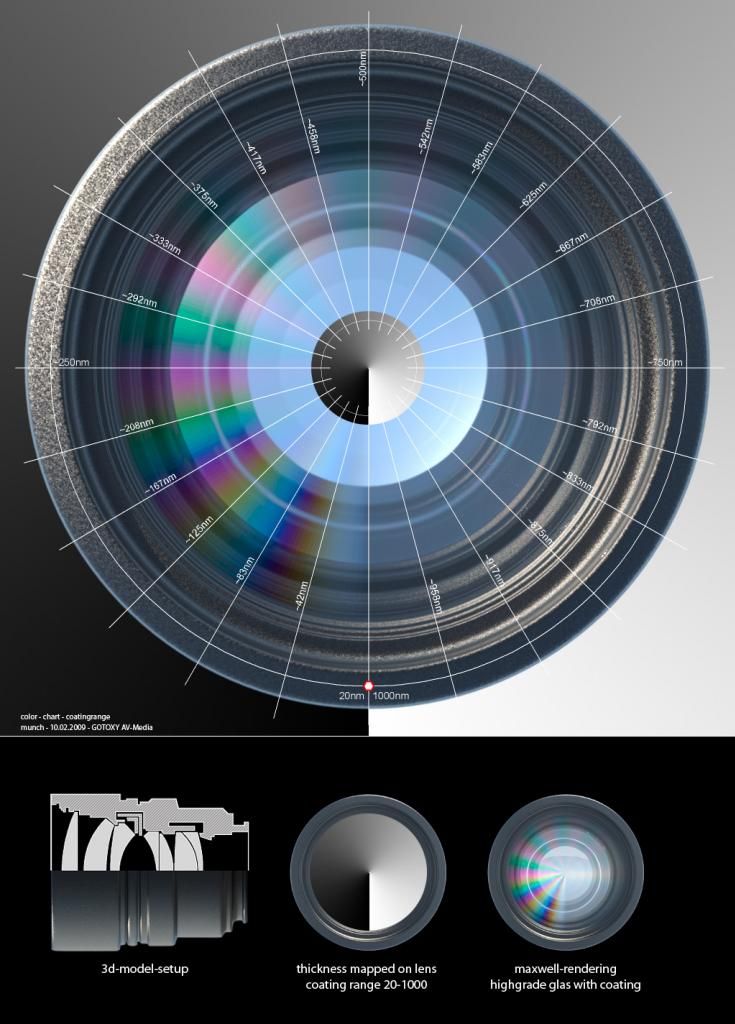- Tue Feb 03, 2015 10:23 pm
#385204
Hello all,
I want to create an oil coated polycarbonate material. I've been trying settings for a few days now but I can't seem to get it right. In the example below the colors in the coating are very saturated and they also seem to be represented in a wide variety. The pattern the colors are following is probably created by the tension in the material. This will probably be hard to achieve as they have to painted on the 3d object in a bump map. So I'm currently focusing on the colors but I can't seem to get them to look the same way.
Example:

My attempt:

Another attempt:

I use a bump map on a coating to get the different colors. I want the colors to be more saturated and closer to each other, as in the example. More like a rainbow effect. Also the plastic (polycarbonate) should be more transparrent, or the coating thinner, but with the colors still very visible.
Does anyone has experience with this or tips? Would be very much appreciated.
This is the material I've been working with: https://www.dropbox.com/s/t6ff5wz6csbl7 ... 5.mxm?dl=0
I want to create an oil coated polycarbonate material. I've been trying settings for a few days now but I can't seem to get it right. In the example below the colors in the coating are very saturated and they also seem to be represented in a wide variety. The pattern the colors are following is probably created by the tension in the material. This will probably be hard to achieve as they have to painted on the 3d object in a bump map. So I'm currently focusing on the colors but I can't seem to get them to look the same way.
Example:

My attempt:

Another attempt:

I use a bump map on a coating to get the different colors. I want the colors to be more saturated and closer to each other, as in the example. More like a rainbow effect. Also the plastic (polycarbonate) should be more transparrent, or the coating thinner, but with the colors still very visible.
Does anyone has experience with this or tips? Would be very much appreciated.
This is the material I've been working with: https://www.dropbox.com/s/t6ff5wz6csbl7 ... 5.mxm?dl=0









 - By Mark Bell
- By Mark Bell